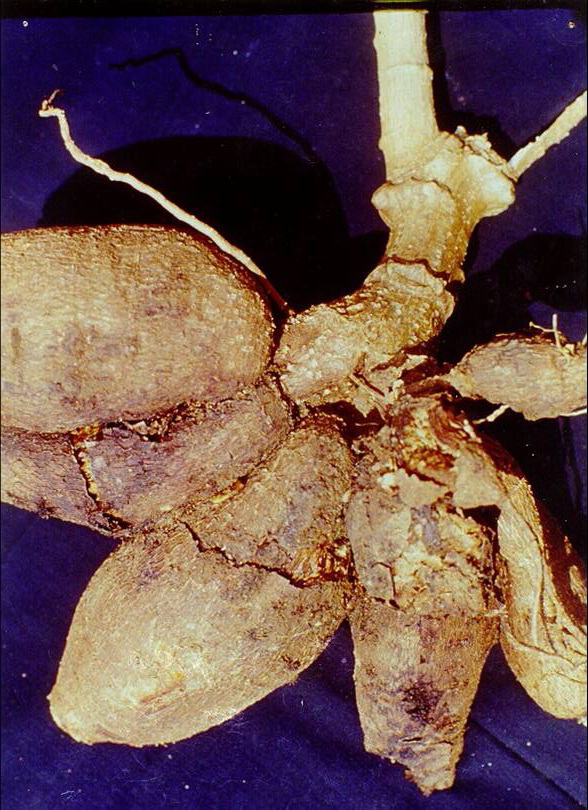
In künstlich inokulierten Versuchsfeldern in der Waldzone in zwei Jahren, und in natürlich infizierten Pflanzen in der Wald- Savannen-Übergangszone und der Feuchtsavannenzone im ersten bzw. Obwohl wegen hoher SorteUmwelt-Interaktionen keine Linie mit Resistenz in allen Ökozonen gefunden wurde, konnten Genotypen mit einem vielversprechenden Toleranzlevel identifiziert werden. manihotis, dem Erreger des Bakterienbrandes, wurde unter Feldbedingungen in drei Ökozonen, der Waldzone, der Wald-Savannen-Übergangszone, und der Feuchtsavanne von Togo evaluiert. Due to high interaction with the environment and tolerance reactions of some genotypes, a prediction of yield loss due to bacterial blight and the determination of a threshhold for loss seems hardly possible.ĭie Interaktion von 22 Manioklinien mit Xanthomonas axonopodis pv. Combining symptom and yield data, seven genotypes (TMS92/0057, TMS29/0326, Cameroon, TMS92/ 0343, Ben86052, Lagos, Gbazékouté) were identified as tolerant. Evaluating symptom development, four genotypes (CVTM4, Main27, TMS30572, TMS92/0429) were resistant in at least one environment and moderately resistant in other environments, while three genotypes (Lagos, Toma289, Toma378) were over all susceptible. Cassava bacterial blight severity was negatively correlated to cassava root yield in artificially inoculated plots in the forest zone in two years, and in non-in- oculated plots in the forest savanna transition zone and the wet savanna zone in the first and the second year, respectively. Although no genotype with disease resistance in all sites was found due to high genotype x environment interactions, genotypes with promising levels of tolerance were identified. manihotis, the causal agent of bacterial blight, was evaluated under field conditions in three different sites, in the forest, forest savanna transition and wet savanna zones of Togo. manihotis.The interaction of twenty-two cassava genotypes with Xanthomonas axonopodis pv.

This information will be of use for better understanding defense mechanisms in cassava to bacterial blight disease.Ĭassava Cassava bacterial blight QTL Quantitative real-time PCR SSR markers Xanthomonas axonopodis pv. Overall, this study has identified QTL and markers linked to CBB infection trait, and identified candidate genes involved in CBB resistance. The expression pattern of all genes showed higher levels in resistant (B82, B32, B20, and B70) as compared to susceptible (HB60, B100, B95, and B47) plants. The results identified candidate genes that showed significant differences in expression between resistant and susceptible lines, including brassinosteroid insensitive 1-associated receptor kinase 1-related (Manes.04G059100), cyclic nucleotide-gated ion channel 2 (Manes.02G051100), and autophagy-related protein 8a-related (Manes.17G026600) at 7 DAI, and regulator of nonsense transcripts 1 homolog (Manes.17G021900) at both 7 and 12 DAI. Genes underlying the QTL were identified and their expression was investigated in resistant and susceptible cassava plants by real-time quantitative RT-PCR. Among all identified QTL, CBB14_10dai_1, CBB14_10dai_2, and CBB14_12dai showed the most significant (P < 0.0001) associations with CBB infection, and explained 21.3, 13.8, and 26.5% of phenotypic variation, respectively. A total of 12 QTL were identified, of which 5, 6, and 1 were detected in 7, 10, and 12 DAI samples, respectively. The phenotype of disease severity was observed at 7, 10, and 12 days after inoculation (DAI).

In this study, quantitative trait loci (QTL) associated with CBB infection were identified in the F1 progenies of a cross between the "Huay Bong 60" and "Hanatee" cassava cultivars. manihotis (or XAM) is a serious disease of cassava (Manihot esculenta Crantz). Cassava bacterial blight (CBB) caused by Xanthomonas axonopodis pv.


 0 kommentar(er)
0 kommentar(er)
